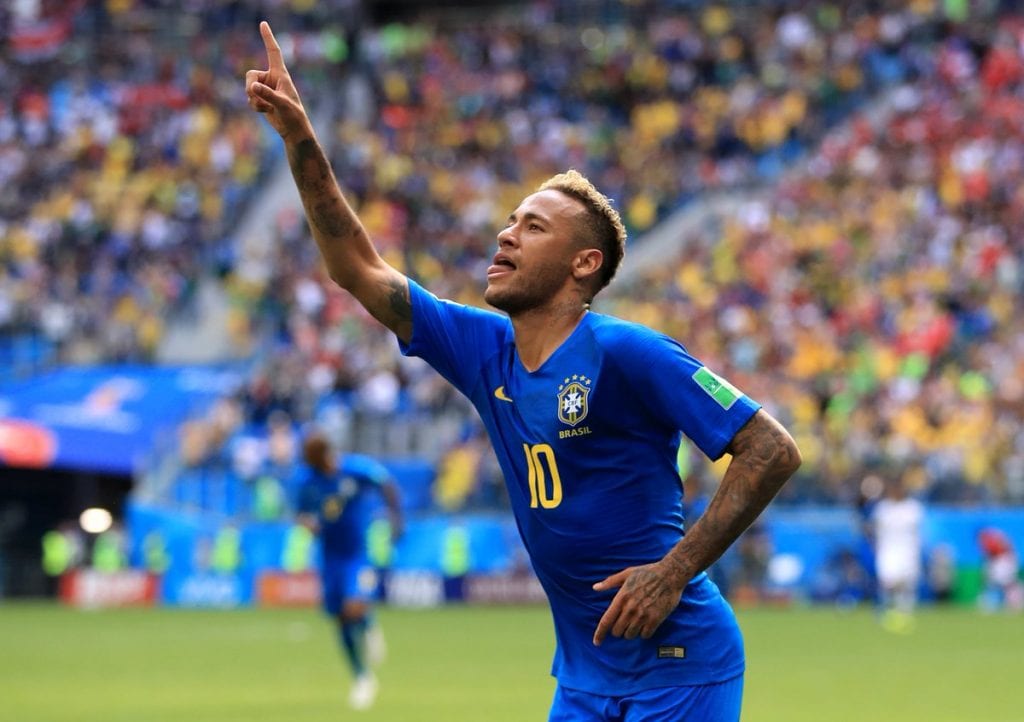The Copa America is an International Football tournament which is held every four years. Each South American country will get the chance to participate in the knock-out event, with a couple of guest nations also being invited to take part.
It is regarded as the oldest, and most prestigious International Continental football tournament, and was previously known as “The South American Football Championship”. Argentina hosted the very first edition back in 1916, and the tournament has gone from strength-to-strength ever since.
Although it was originally designed to be played every four years, there is a degree of flexibility about the Copa America, and this pattern has been known to differ. This can often depend on other International tournaments such as the FIFA World Cup. CONMEBOL arranged a special tournament in 2016, to mark the competitions centenary.
Again, the number of participants is not exclusive, and previous stagings have seen 16 nations take part, however since 1993, the tournament has been contested between just 12 teams. 2019 will be the final time that the tournament features just a dozen sides, with CONMEBOL announcing that 16 nations will take part from 2020 onwards.
Mexico have been invited to participate in every tournament since 1993, whilst the USA have also been regular competitors in the Copa America. AFC outfit Japan are another country who are regularly asked to compete, and the Blue Samurai will feature once again in the 2019 edition.
Other nations to have received an invite include Haiti, Costa Rica, Jamaica, Honduras and Panama.
The majority of South American sides have won the Copa America on at least one occasion, with only Ecuador and Venezuela still awaiting that inaugural success. Uruguay are the most successful side in this competition, and will be hoping to secure their 16th victory this summer. Chile are the reigning champions going into the 2019 Copa America, having picked up their second title in 2016. Despite not qualifying for the 2018 FIFA World Cup, they have enjoyed plenty of recent success in this competition.
There is no set venue for the Copa America, and the tournament will move between countries every four years. Argentina have played hosts on nine occasions, whilst the 46th edition will be staged by Brazil in the summer of 2019. It will be competed at six different venues, many of which were used during the 2014 FIFA World Cup.
Venezuela were the last nation given the opportunity to host the tournament in 2007. Every South American country has now staged the Copa America at least once.
The teams are initially drawn in three groups of four, with the top two going through to the quarter-finals. The 2019 final will be held on July 7th in Rio de Janeiro.
Each tournament is also given its own logo, and will have a mascot to represent it. This tradition began in 1987.
When and Where?
Currently, the Copa America is held approximately every four years. However, CONMEBOL announced that from 2020 onwards, it would be moved to coincide with the European Championships.
The competition is hosted a different country, and this is usually operated on an alphabetical rotation system. Brazil weren’t able to host the 2015 edition so soon after the FIFA World Cup, so their turn was skipped, and moved to 2019.
Why is the Copa America so Popular?
Quite simply, it is an International football tournament, and as a result, it will always attract headlines.
It is also generally (pre-2020) held in the summer of a non-World Cup year, and this always helps attract the interest of those football fans who are struggling to cope without their weekly sporting fix.
It is also a chance to see how the South American powerhouses are shaping up. The majority of nations, particularly Brazil and Argentina will be able to showcase some of Europe’s top players, with the likes of Gabriel Jesus, Lionel Messi and Luis Suarez having featured in recent years.
It is also a reasonably short tournament with just 12 teams taking part, and that allows games to be well-spread out. This adds to the appeal.
The Copa America is also a very popular betting event as there is no regular competitive European football to distract punters.
What Betting Opportunities Are Available?
Quite a few. Punters are able to bet on the winning nation months in advance, and the majority of matches are priced up four weeks before the tournament gets underway.
There will be plenty of markets available once the draw has been made, and squads have been announced. Once each country has declared their squads, goalscorer markets will begin to form.
Key Betting Markets
Outright Winner – This is the most popular market, and is the most-talked about option. The titles have been shared around in recent years, although Chile have won each of the last two editions. Punters must decide which team will come out on top. Your chosen team must be victorious in the final, and lift the trophy in order to receive a pay-out.
Name the Finalists – An opportunity to garner some bigger odds with this market. There are just 12 teams taking part in the tournament, and this market allows bettors to decide which two nations will make it to the showpiece event.
To Reach the Final/Semi-Final – Another market in which punters do not need to pick the eventual winner of the competition. This is an opportunity to pick a side who you may consider to be underrated by the market. Any side who are drawn in a relatively winnable group may be a decent option in this field. This market will generally be available around seven days before the tournament gets underway.
Golden Boot – The Copa America always attracts a decent calibre of player, and there is plenty of talent to choose from in this field. This is a case of predicting which player will score the highest number of goals throughout the tournament. With maxium of six matches for each team, the top goalscorer can sometimes receive the Golden Boot for netting just four or five times.
Group Winners – The groups are often drawn months in advance, and it gives punters a decent opportunity to analyse each sides chances of coming out on top. With just three group games in the Copa America, a sluggish start can blow any chance of finishing on top. Punters must correctly predict which side finishing at the summit of their respective section.
Match Winner (1X2) – Simply a case of predicting which side will win in each of the individual matches at the tournament.
Under/Over – Each match will have numerous markets priced up by the bookies. One of the most popular is predicting how many goals will be scored in each game. The line is always set at Under/Over 2.5 Goals, although different variations are available.
Anytime Goalscorer – Once the squads are announced, anytime goalscorer markets will be priced up. This is simply a case of predicting which player will find the back of the net during the 90 minutes. Other options include: First Goalscorer, Last Goalscorer, To Score 2 or More.
Handicaps – Although it is a hugely competitive event, there are still one or two one-sided contests, particularly in the group stage. Handicap betting is the ideal opportunity to get involved in these type of fixtures. This allows punters to give the favourites, a handicap to overcome (e.g -1), and their chosen side must win by two clear goals in order to receive a pay-out.
Bobby’s Big Betting Tips for the Copa America
Fatigue Can Play a Part – By the time the players get on a plane to compete in the Copa America, it has already been a long-hard season for the majority of those who play regularly in Europe. Players who have competed domestically, and in the Champions League/Europa League finals can often suffer from exhaustion by early-June, and it is always advised to be cautious when backing them. Their heart may not be in it, and it may have a detrimental effect on the team. MLS players are usually around 3 months into their season by the time this tournament rolls around, with many of them at peak fitness.
Think Outside of the Box for Goalscorers – The Copa America is a hugely competitive affair, and it is often the competition where a number of lower-profile players make a name for themselves. Eduardo Vargas ended the tournament as the top goalscorer in 2016, whilst Paolo Guerrero of Peru is always a threat, and was 2011’s top scorer. The higher profile players sometimes fail to hit the same heights in this event.
Team Spirit/Happy Camp Can Have a Major Impact – South American coaches do have the tendency to be a little fiery, and many of them will be in their roles for short periods of time (Jose Pekerman excluded). This can often result in a short-term change of fortunes, and it is always best to do your research beforehand. Are all the players on board with the new coaches tactics? Avoid any side where there has been a high-profile falling out between some of the players and/or the coaching staff.
Don’t Underestimate Those Sides Who Missed Out on the World Cup – Chile have shown in recent years that the disappointment of not featuring at the FIFA World Cup hasn’t stopped them succeeding here. The majority of punters will gravitate towards the bigger names, but Argentina haven’t won since 1993, whilst Brazil’s last victory came in 2007.















